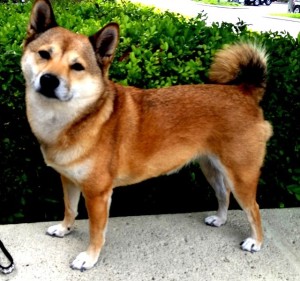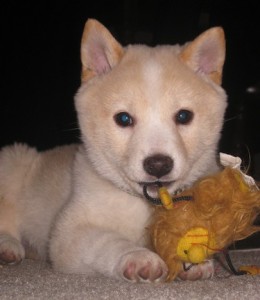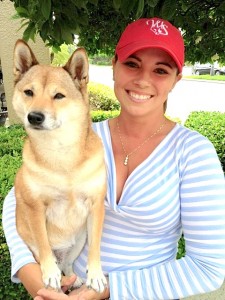 Dog Walkin’ Wellington
Dog Walkin’ Wellington
The Shiba Inu
By Barbara Phillippi
“I’ve never heard of a Shiba Inu!” As I glanced through tables of goods at a local store, I noticed a young lady, holding a dog, and speaking with another customer. “What kind of dog is she?” the customer asked. I couldn’t hear what she told him, but did hear the gentleman reply, “Really! I’ve never heard of a Shiba Inu.”
Curious, I moved closer, and listened as the dog’s owner explained that the Shiba Inu is the smallest of six breeds of canine native to Japan. It was obvious that Danelle Diachuk enjoyed explaining her dog Foxy’s history, and unique qualities.
The Shiba was first documented in the US in 1954. In the late ’70s, Americans started to import the dog for breeding; the first litter was born in the United States in 1979, and the Shiba Inu was admitted to the AKC Stud Book April 1, 1992. Regular classification followed in the Non-Sporting Group June 1, 1993.
-AKC (American Kennel Club) breed registry

Danelle says that Foxy gets along well with other dogs, and is affectionate with two newly adopted kittens at her barn. She has never shown aggression toward children, but prefers that the young, noisy ones keep their distance; there was an episode where a loud, aggressive child ran up to Foxy, screaming, and squeezed her, and she’s been uneasy with kids ever since.
Five year old Foxy is also an excellent guard dog. Danelle is an equestrian who shows in Wellington during the winter months, and often travels back and forth to her home in the Syracuse, NY area. “When we’re in a hotel room, or other strange place, she always finds a position where she can put herself between the door, or point of last entry, and me. And she watches that door.”
Like the Basenji, the Shiba Inu doesn’t bark. That’s right, no yapping terriers here. When these dogs are excited enough to make a noise, “it’s rather like a high yodeling,” says Danelle, or, in extreme stress, they emit something that sounds like a weird “scream.”
Danelle’s family has always raised dogs, everything from sled dog racing Huskies to Cocker Spaniels. But Foxy is the smartest dog she’s ever seen. “She’s learned hand signal commands that I didn’t even realize I was giving,” says Danelle. She’s also a ham, and knows how to get the kind of attention she’s looking for, at any given moment.
Until Danelle returns north, she and Foxy can often be found visiting her friend, who owns the boutique ZEST, in the Courtyard Shops, corner of Wellington Trace and Greenview Shores Blvd, near Publix. She  invites people who would like to know more about the Shiba Inu breed to stop by, have a look at Foxy, and say, “Hi.”
invites people who would like to know more about the Shiba Inu breed to stop by, have a look at Foxy, and say, “Hi.”
PS: Yes, there is a Florida Shiba Inu rescue site.
http://shibainu.rescueme.org/Florida
“In a perfect world, every dog would have a home, and every home would have a dog.”
The Shiba Inu has an independent nature, and can be reserved toward strangers, but is loyal and affectionate to owner and family. These dogs adapt well to different living situations, even apartment and condo dwellings, but they are fairly high energy, and must be exercised regularly on leash, or in a secure area.

She was spot on and accurate. “Descended from the primitive dogs of the ancient people of Japan, the Shiba Inu was bred to hunt small wild game, boar and bear. They’re very brave for their size, males 14½ inches to 16½ inches at withers, females 13½ inches to 15½ inches. Average weight is approximately 23 pounds for males, 17 pounds for females.
The name Shiba in Japanese means brushwood, after the breed’s hunting terrain, or the color of brushwood leaves in the fall, and Inu means dog. World War II nearly spelled disaster for the Shiba because of bombing raids and rampant distemper, but after the war, bloodlines of the remaining three strains were combined to produce the breed as it is known today.
Over a lifetime, Barbara Phillippi has had mostly “normal” dogs – a few German Shepherds and a bunch of wonderful “mutts,” each with its own wonderful, quirky, qualities. For many years, she taught 4-H dog obedience courses, under the authorization of Cornell University’s Cooperative Extension Services. That terrific program teaches the basics of dog behavior, of every breed, to young dog owners. Today she lives in Wellington with three Jack Russell Terriers – Woody, Gracie, and Buck. “These guys showed me a learning curve that I never knew existed!”

